Why you can trust Tom's Hardware
The Dark Matter 42892 has seven picture modes which offer different color, gamma and grayscale profiles meant to suit different applications or game types. There’s also an sRGB mode if you want to use the smaller gamut. For gaming and calibration, we used the default Standard preset.
Grayscale and Gamma Tracking
Our grayscale and gamma tests use Calman calibration software from Portrait Displays. We describe our grayscale and gamma tests in detail here.
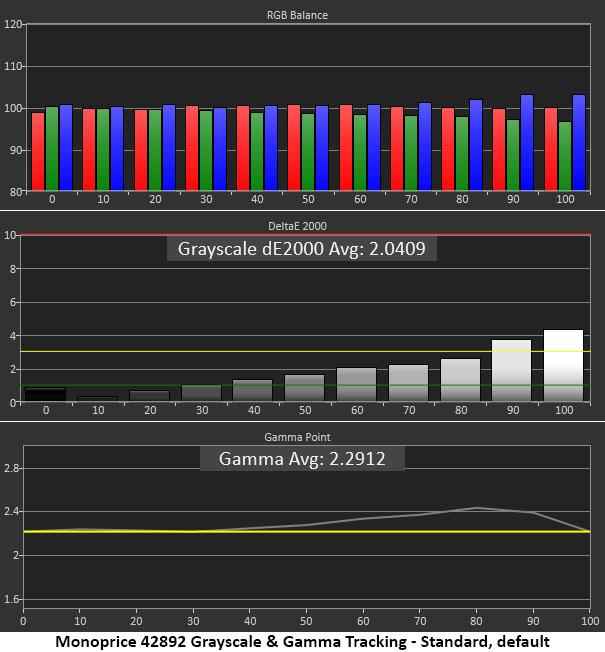
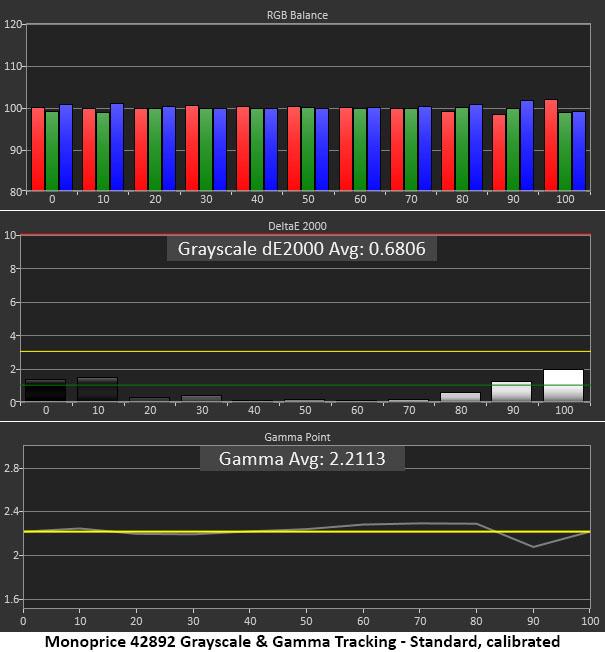
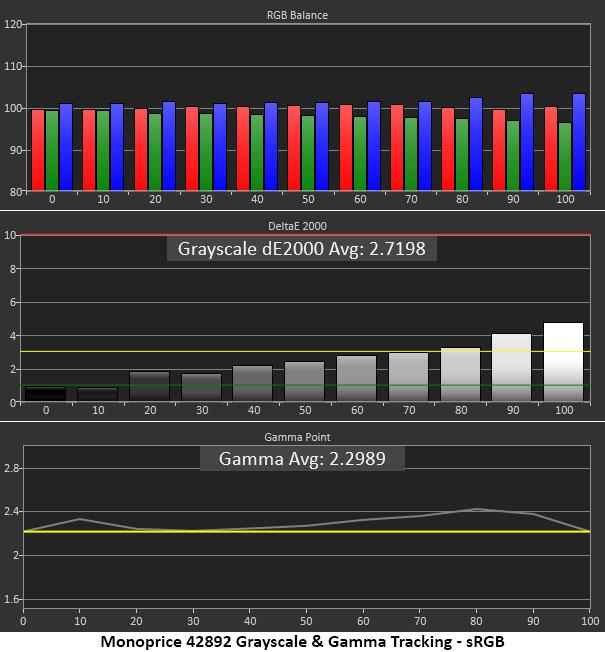
In Standard mode, you’ll only see a slight purple tint in the brightest parts of the image. In real-world content, the issue was hard to spot. A rise in gamma from 60-90% brightness means some highlight detail will be muted, reducing image depth. This typically indicates a contrast slider that’s set too high.
Tweaking the RGB sliders and lowering contrast one click fixed both issues neatly. There are no visible errors in grayscale tracking and highlight detail is now visibly brighter. Though the gain in accuracy is small, it had a visible impact on picture quality.
If you prefer to use sRGB for SDR content, grayscale tracking is locked and cannot be adjusted. But it only shows a slight purple tint in the 90 and 100% brightness steps. Gamma is as before with a slight reduction in highlight areas of the image. Some shadow detail is also a bit harder to see, thanks to a small gamma bump at the bottom end of the scale. Overall, these are minor errors. We consider the 42892’s sRGB mode to be completely usable.
Comparisons
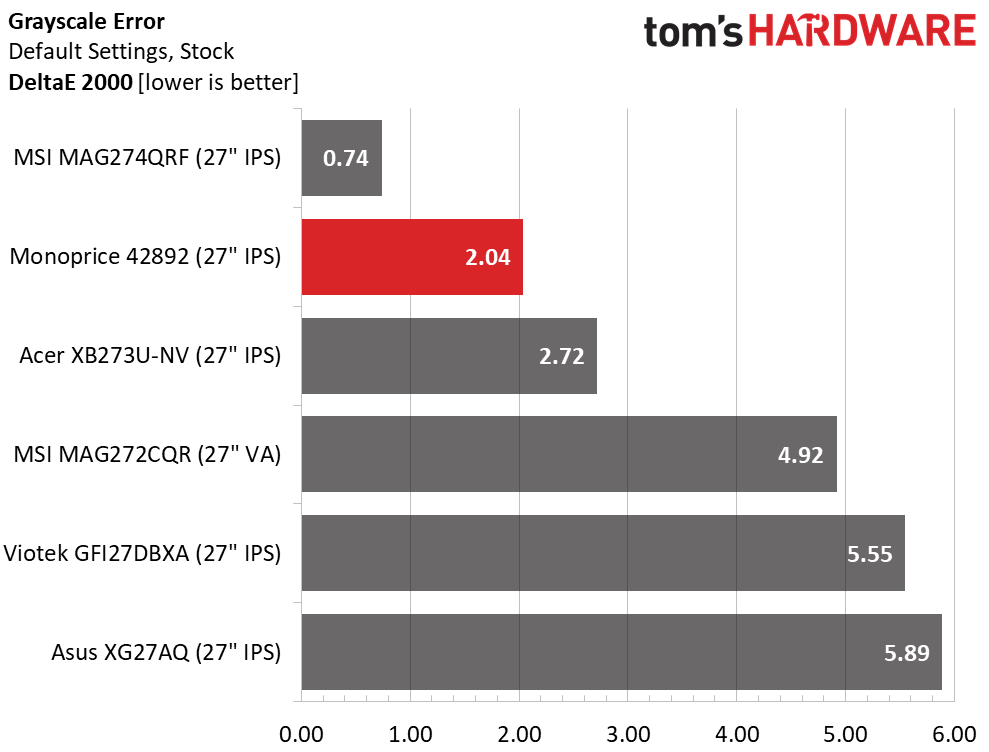
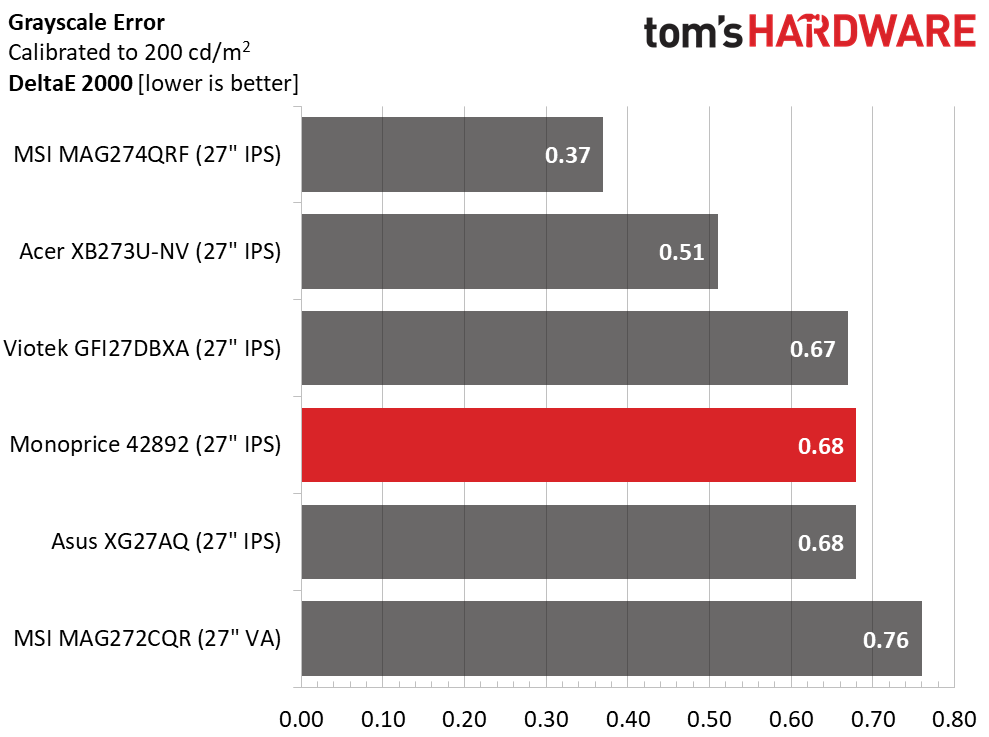
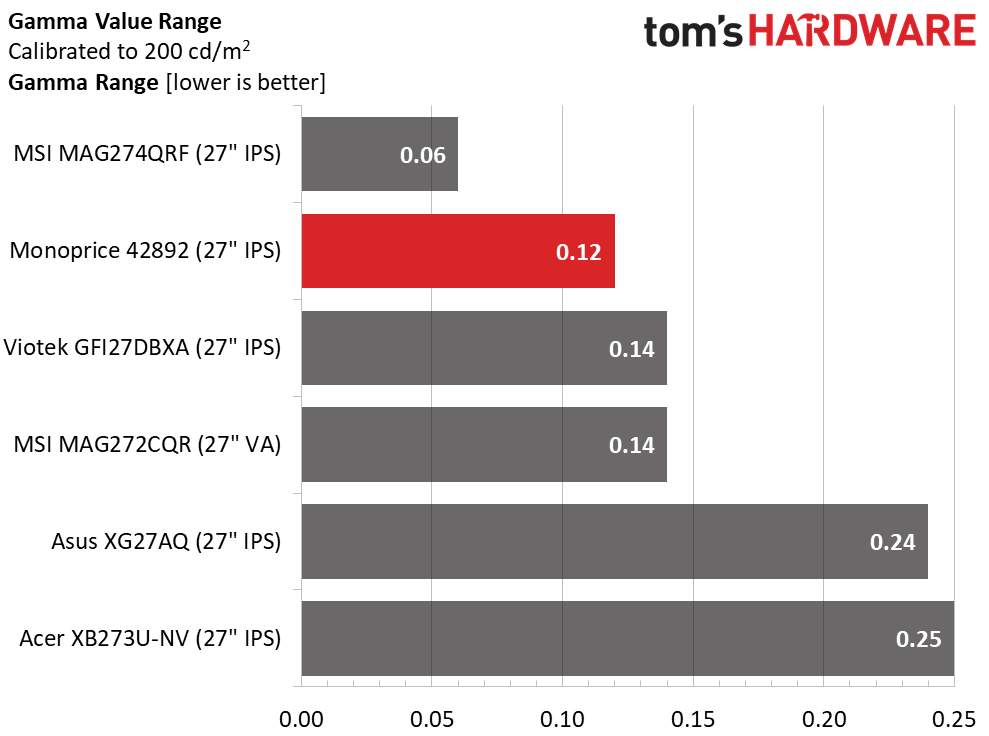
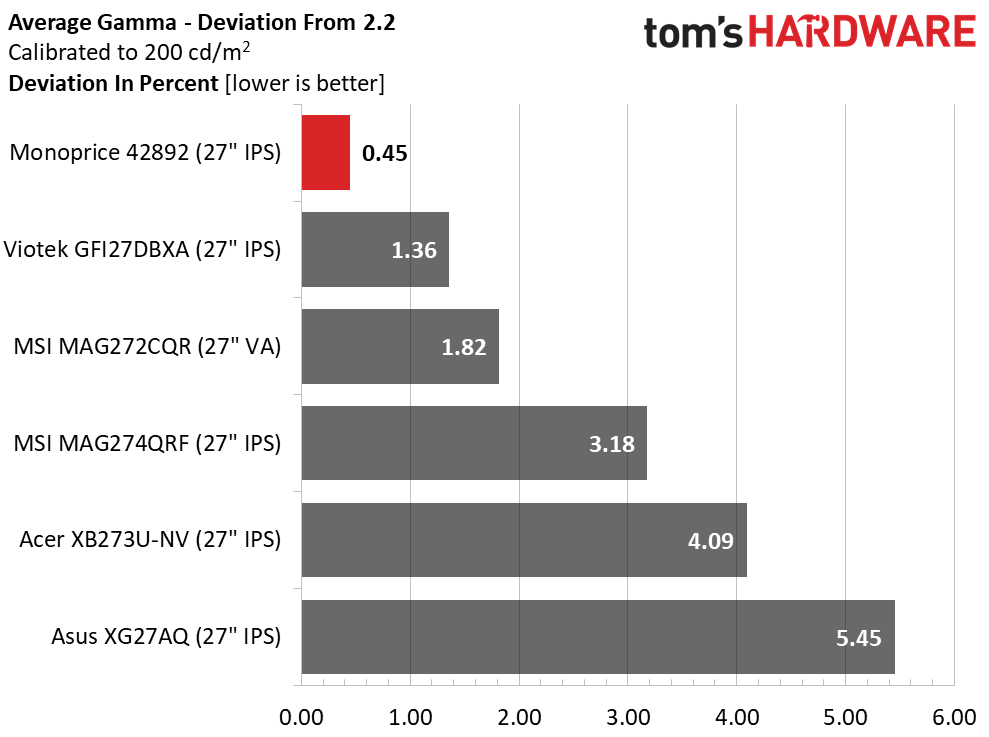
The 42892 compares well against the other screens with a low 2.04 Delta E (dE) average grayscale error out of the box. Aside from the tiny errors we noted earlier, there is little to complain about. After calibration, all the screens hit a high standard, so the Monoprice’s fourth place finish is not a negative. Any score below 1dE is pro-level quality.
With a tight 0.12 range of gamma values, you won’t see any issues if you dial in our recommended settings. Highlight detail pops better when you lower the contrast slider from 50 to 49. With an actual average value of 2.19, the 42892 wins the gamma deviation test.
Get Tom's Hardware's best news and in-depth reviews, straight to your inbox.
Color Gamut Accuracy
Our color gamut and volume testing use Portrait Displays’ Calman software. For details on our color gamut testing and volume calculations, click here.
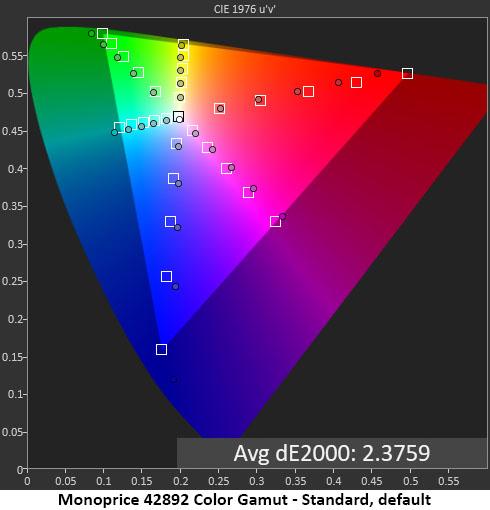
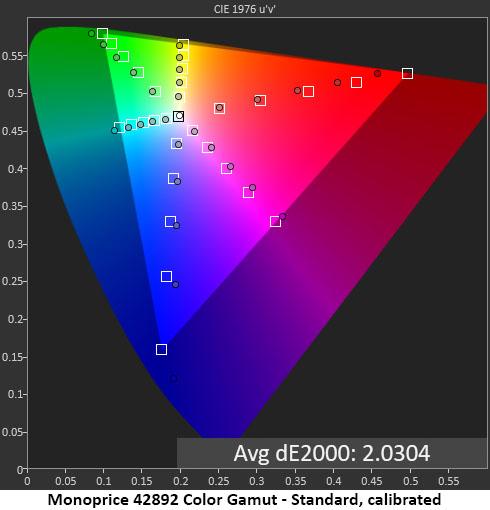

The 42892 shows some unusual color gamut response. Most extended color screens hit their marks for red and blue and come up short in green. The Monoprice comes up a little short in red and overachieves in green and blue. This made things like sky and grass look very vibrant, and warmer tones had a little less impact. We’re talking subtleties here; the overall error is still low enough that you won’t see a significant difference in actual content.
Our calibration (see page 1) tightens up the chart a little but didn’t visibly change the image much. Color looked about the same, but our grayscale and contrast adjustments do make highlights stand out better. The sRGB chart looks very good with an even lower average error of 1.89dE. All color points are on or near their targets.
Comparisons
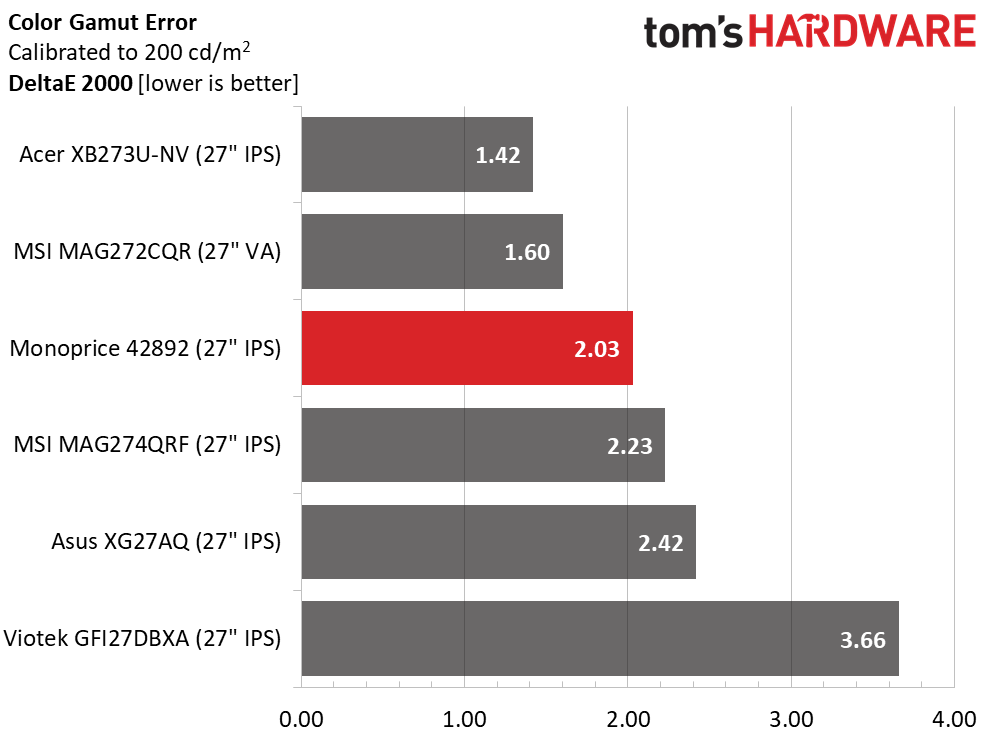
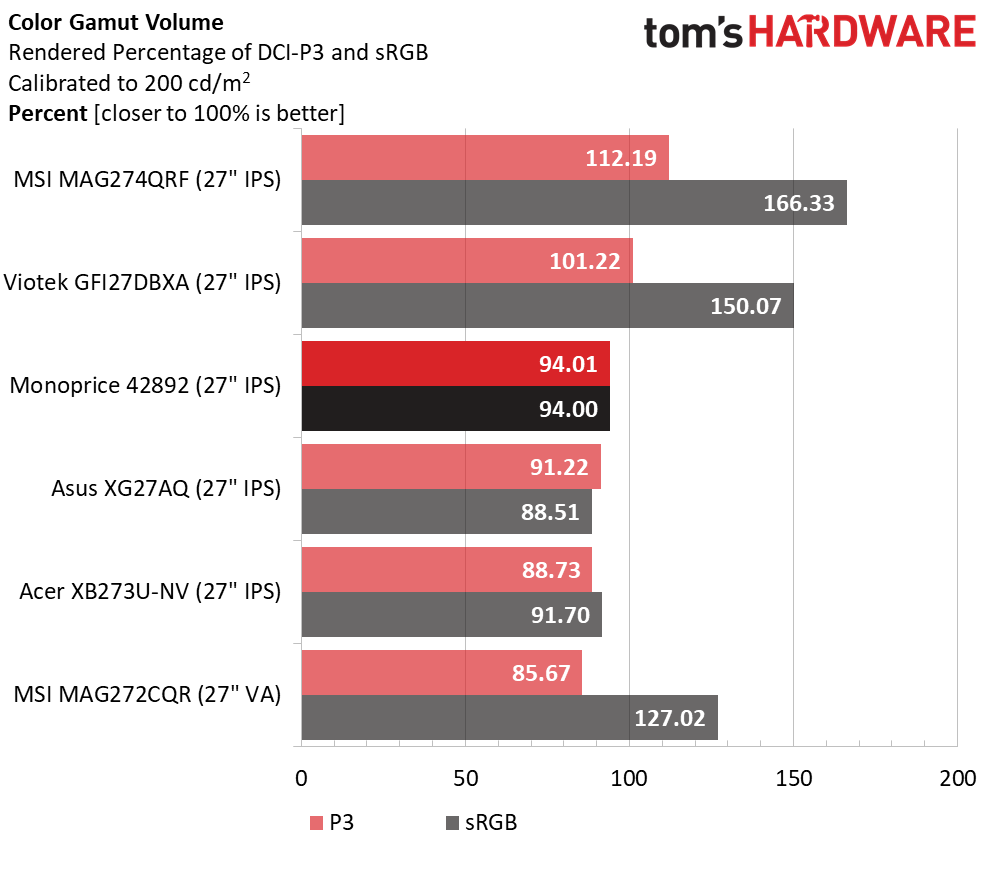
Though the 42892’s red primary is a little undersaturated, overall numbers are excellent. It places third in our group for average color error and sports a healthy 94% coverage of DCI-P3. This is higher than average; most extended color screens clock in around 88-90%. You can thank the bonus green and blue for this. Since the red primary is undersaturated, we wouldn’t recommend the 42892 for color-critical applications.
MORE: Best Gaming Monitors
MORE: How We Test PC Monitors
MORE: How to Buy a PC Monitor: A 2021 Guide
Current page: Grayscale, Gamma and Color
Prev Page Brightness and Contrast Next Page HDR Performance
Christian Eberle is a Contributing Editor for Tom's Hardware US. He's a veteran reviewer of A/V equipment, specializing in monitors. Christian began his obsession with tech when he built his first PC in 1991, a 286 running DOS 3.0 at a blazing 12MHz. In 2006, he undertook training from the Imaging Science Foundation in video calibration and testing and thus started a passion for precise imaging that persists to this day. He is also a professional musician with a degree from the New England Conservatory as a classical bassoonist which he used to good effect as a performer with the West Point Army Band from 1987 to 2013. He enjoys watching movies and listening to high-end audio in his custom-built home theater and can be seen riding trails near his home on a race-ready ICE VTX recumbent trike. Christian enjoys the endless summer in Florida where he lives with his wife and Chihuahua and plays with orchestras around the state.